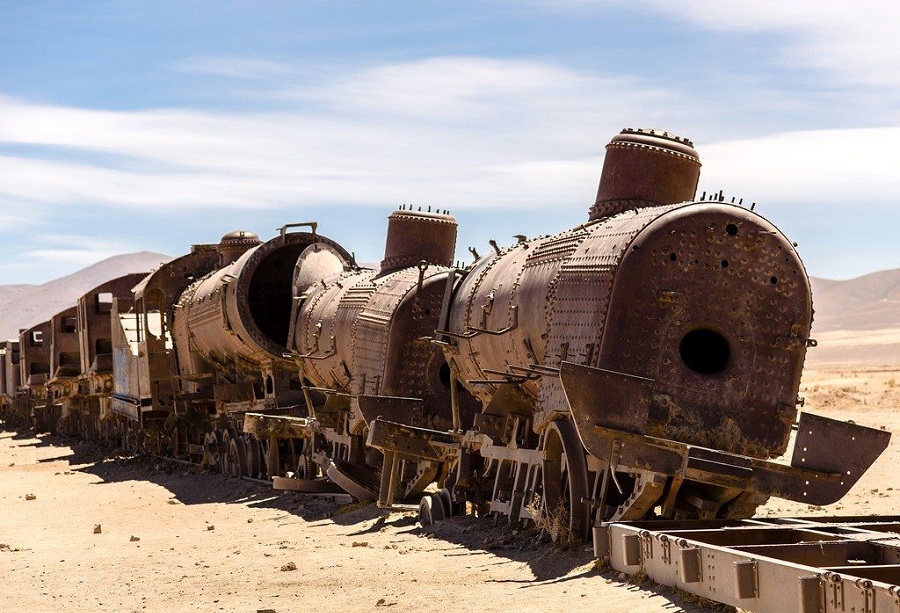RIO DE JANEIRO, BRAZIL – In the heart of the high desert in southwest Bolivia is one of the most striking, fascinating and even spooky places in the altiplano. Three kilometers from the Bolivian city of Uyuni, at the gates of the world’s largest salt flat, dozens of trains from the past century lie corroded in the open.
The Train Cemetery is home to old freight cars and locomotives that have been abandoned for over half a century in the middle of the desert. These railroads, rusted by the passage of time, climatic conditions and victims of looting, are witnesses and a reflection of the area’s history. Until the beginning of the pandemic, they hosted hundreds of tourists every day, as it is usually the first stop for excursions that go into the Uyuni salt flat.

The place where the old locomotives are located is not a museum as such, with its proper care, it is a dump of iron and metal, victims of the passage of time and dismantling by opportunists looking to sell parts. Notwithstanding, the trains still retain their original shape, making the locomotives an unforgettable tribute to a bygone era.
Visitors can walk among dozens of trains, climb on top or enter some cars that still retain their skeleton. In addition, from their top one can see the desert and the surrounding mountains with greater perspective. With much care, however, as some of the structures are unsafe.
The origin of the Uyuni Train Cemetery
The rusty trains take us on an imaginary journey to a time of flourishing progress, today transformed into an ideal place for tourists to take pictures.
Knowing the history of Uyuni is key to understanding the existence of the Train Cemetery. This city next to the homonymous salt flat was the first place in Bolivia where a train’s whistle was heard.
In 1899, the construction of Bolivia’s first railway line, linking Uyuni with Antofagasta, was completed. The potential of the silver mines near the city where the Train Cemetery is located soon led the railroad to became the backbone of industrial development, giving rise to many towns near the tracks.
As the decades went by, the economic illusions of the area began to fade and the Chaco War (1932-1935) took its toll on the country. Bolivia’s war efforts also involved the railroad, with the train’s consequent wear and tear, which when they needed maintenance were moved to this area located three kilometers from Uyuni.
There they were stored while awaiting repairs, but for many this was the last stop.
Source: El Confidencial

